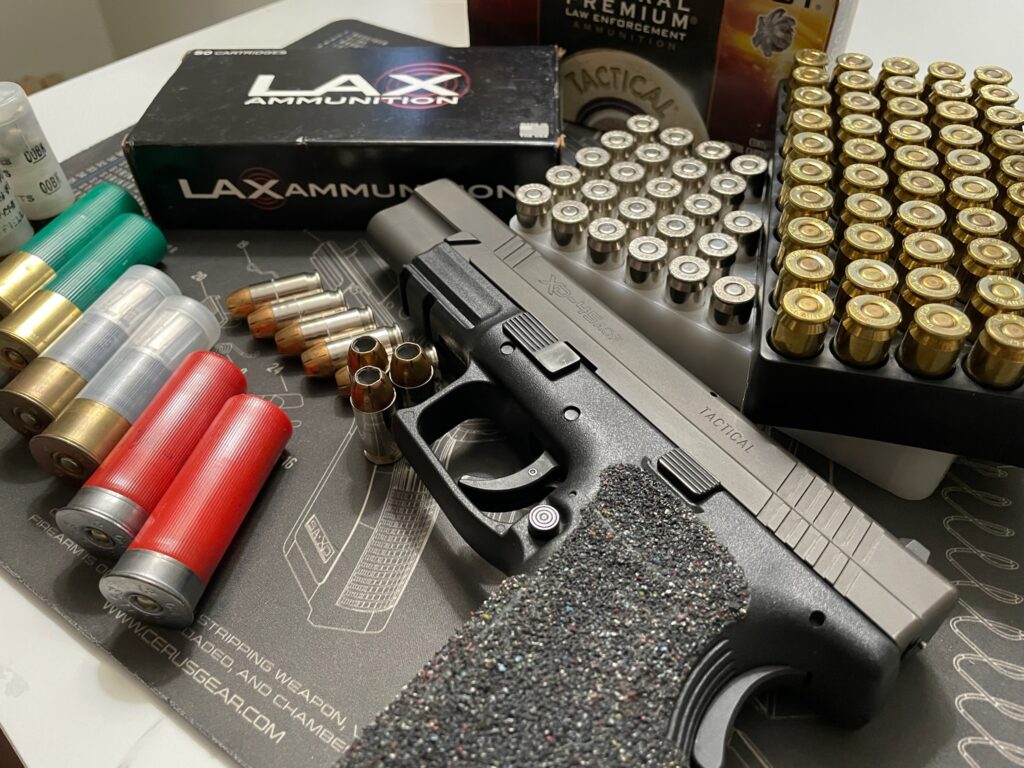
Some say shotguns are the quintessential entry firearm—cheap, reliable, and effective. When I first unboxed my Mossberg 590, I immediately understood why this shotgun is considered a hard-edged workhorse. The blued steel finish was clean, but the edges weren’t the most forgiving. It had that raw, unpolished utility that screams, “I’m here to do a job.” This shotgun is a tool in its purest form—function over form, rugged over refined. And for many, that’s exactly the appeal.
First Impressions: A No-Nonsense Tool

The Mossberg 590 feels like it’s forged for utility and reliability. Straight out of the box, it’s a shotgun built tough, with its tang-mounted safety, dual action bars, and ability to cycle a variety of loads without complaint. It doesn’t try to dazzle with aesthetic frills—it’s all business. But that raw, practical appeal eventually sparked a journey to make it truly mine.
The Tactical Phase

Like many Mossberg owners, I initially went down the “tactical” rabbit hole. I swapped out the stock for a pistol grip and added a railed forend. The result? A shotgun that looked like it belonged in a SWAT catalog but felt like I was carrying a bag of bricks. The added weight and poor ergonomics quickly turned it into a burdensome novelty. Sometimes, simpler really is better.
The Return to Simplicity: WOOX Wood Elegance

Eventually, I came full circle, stripping the shotgun back to its essence. But this time, I wanted refinement. Enter WOOX with their stunning walnut forend and stock. These Italian-crafted upgrades transformed my Mossberg 590 into something special: a marriage of rugged American utility and European luxury. The WOOX components elevated the shotgun from a utilitarian workhorse to something I’d describe as “luxury broom”—still a hardened tool, but now with a touch of elegance.
Performance at The Range
The Mossberg 590 has always been a reliable performer. Whether I’m running birdshot, buckshot, or slugs, it cycles flawlessly. The ghost ring sights allow for quick target acquisition, though they take some getting used to for moving targets. Recoil is manageable, thanks to its weight and a solid recoil pad. At the range, it’s a beast, and with proper care, it’s ready for anything—home defense, hunting, or a fun day breaking clays.
Personal Flair: My Mods
Here’s where the fun begins. Customizing the Mossberg 590 is like tuning a classic car—endless possibilities. Here’s my personal setup:
- Magazine Follower: Swapped for a flashy red aluminum cap for better visibility during reloads.
- Safety: Replaced with a red aluminum safety, adding both style and tactile feedback.
- QD Sling Forward Attachment: For quick attachment and detachment of a sling, enhancing versatility.
- Upgraded Magazine Spring: Ensures reliable feeding, even after heavy use.
- Top Rail with Shell Holders: Adds practicality by keeping additional shells within arm’s reach.
- WOOX Walnut Forend and Stock: The pièce de résistance, combining durability with unparalleled craftsmanship.
Final Thoughts
The Mossberg 590 is a shotgun that grows with you. It’s a clean slate—functional and reliable out of the box but endlessly customizable. Whether you’re a first-time buyer looking for an entry-level gun or a seasoned enthusiast wanting a rugged, dependable tool, the Mossberg 590 delivers.
For me, it has gone from a no-nonsense workhorse to a refined, personalized masterpiece. And isn’t that the beauty of firearms? They’re not just tools; they’re extensions of us, shaped by our needs, tastes, and experiences.
Specifications
Chambering: 12-gauge
Barrel Length: 20 inches
Capacity: 8+1
Finish: Blued
Sights: Ghost ring
Stock and Forend: WOOX walnut (custom upgrade)
Weight: 7.25 lbs
Price: Starts around $450 (custom mods not included)
The Mossberg 590 is proof that a firearm can be both a utility and a canvas for personal expression. Keep it simple, or trick it out—this shotgun is ready for whatever you throw at it.











